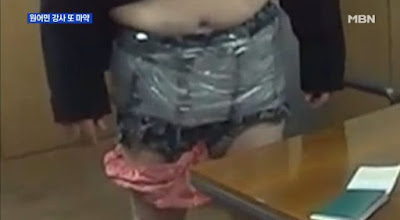http://www.umpalangkaraya.ac.id/forum/topik-5380-selebriti-indonesia.html
https://cie.asu.edu/ojs/index.php/cieatasu/comment/view/813/0/2010
http://wdm.iowa.gov/redirect.aspx?url=http://selebriti.xyz
http://usphs.gov/redirect.aspx?url=http://selebriti.xyz
http://sos.mn.gov/redirect.aspx?url=http://selebriti.xyz
http://polytrauma.va.gov/disclaimer.asp?url=http://selebriti.xyz
http://transtats.bts.gov/exit.asp?url=http://selebriti.xyz
http://newportbeachca.gov/redirect.aspx?url=http://selebriti.xyz
http://fresnocitycollege.edu/redirect.aspx?url=http://selebriti.xyz
http://alliancecreditunion.org/redirect.aspx?url=http://selebriti.xyz
http://transition.fcc.gov/fcc-bin/bye?http://selebriti.xyz
http://www.evansville.in.gov/redirect.aspx?url=http://selebriti.xyz
http://www.nationalcityca.gov/redirect.aspx?url=http://selebriti.xyz
http://www.transtats.bts.gov/exit.asp?url=http://selebriti.xyz
http://www.tc.faa.gov/content/leaving.asp?extlink=http://selebriti.xyz
http://www.miami.edu/?URL=selebriti.xyz/
http://wdm.iowa.gov/redirect.aspx?url=http://ganool.xyz
http://usphs.gov/redirect.aspx?url=http://ganool.xyz
http://sos.mn.gov/redirect.aspx?url=http://ganool.xyz
http://polytrauma.va.gov/disclaimer.asp?url=http://ganool.xyz
http://transtats.bts.gov/exit.asp?url=http://ganool.xyz
http://newportbeachca.gov/redirect.aspx?url=http://ganool.xyz
http://fresnocitycollege.edu/redirect.aspx?url=http://ganool.xyz
http://alliancecreditunion.org/redirect.aspx?url=http://ganool.xyz
http://transition.fcc.gov/fcc-bin/bye?http://ganool.xyz
http://www.evansville.in.gov/redirect.aspx?url=http://ganool.xyz
http://www.nationalcityca.gov/redirect.aspx?url=http://ganool.xyz
http://www.transtats.bts.gov/exit.asp?url=http://ganool.xyz
http://www.tc.faa.gov/content/leaving.asp?extlink=http://ganool.xyz
http://www.miami.edu/?URL=ganool.xyz/
https://cie.asu.edu/ojs/index.php/cieatasu/comment/view/813/0/2010
http://wdm.iowa.gov/redirect.aspx?url=http://selebriti.xyz
http://usphs.gov/redirect.aspx?url=http://selebriti.xyz
http://sos.mn.gov/redirect.aspx?url=http://selebriti.xyz
http://polytrauma.va.gov/disclaimer.asp?url=http://selebriti.xyz
http://transtats.bts.gov/exit.asp?url=http://selebriti.xyz
http://newportbeachca.gov/redirect.aspx?url=http://selebriti.xyz
http://fresnocitycollege.edu/redirect.aspx?url=http://selebriti.xyz
http://alliancecreditunion.org/redirect.aspx?url=http://selebriti.xyz
http://transition.fcc.gov/fcc-bin/bye?http://selebriti.xyz
http://www.evansville.in.gov/redirect.aspx?url=http://selebriti.xyz
http://www.nationalcityca.gov/redirect.aspx?url=http://selebriti.xyz
http://www.transtats.bts.gov/exit.asp?url=http://selebriti.xyz
http://www.tc.faa.gov/content/leaving.asp?extlink=http://selebriti.xyz
http://www.miami.edu/?URL=selebriti.xyz/
http://wdm.iowa.gov/redirect.aspx?url=http://ganool.xyz
http://usphs.gov/redirect.aspx?url=http://ganool.xyz
http://sos.mn.gov/redirect.aspx?url=http://ganool.xyz
http://polytrauma.va.gov/disclaimer.asp?url=http://ganool.xyz
http://transtats.bts.gov/exit.asp?url=http://ganool.xyz
http://newportbeachca.gov/redirect.aspx?url=http://ganool.xyz
http://fresnocitycollege.edu/redirect.aspx?url=http://ganool.xyz
http://alliancecreditunion.org/redirect.aspx?url=http://ganool.xyz
http://transition.fcc.gov/fcc-bin/bye?http://ganool.xyz
http://www.evansville.in.gov/redirect.aspx?url=http://ganool.xyz
http://www.nationalcityca.gov/redirect.aspx?url=http://ganool.xyz
http://www.transtats.bts.gov/exit.asp?url=http://ganool.xyz
http://www.tc.faa.gov/content/leaving.asp?extlink=http://ganool.xyz
http://www.miami.edu/?URL=ganool.xyz/


















